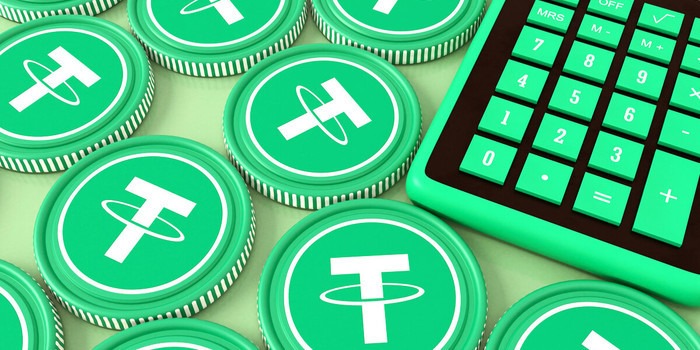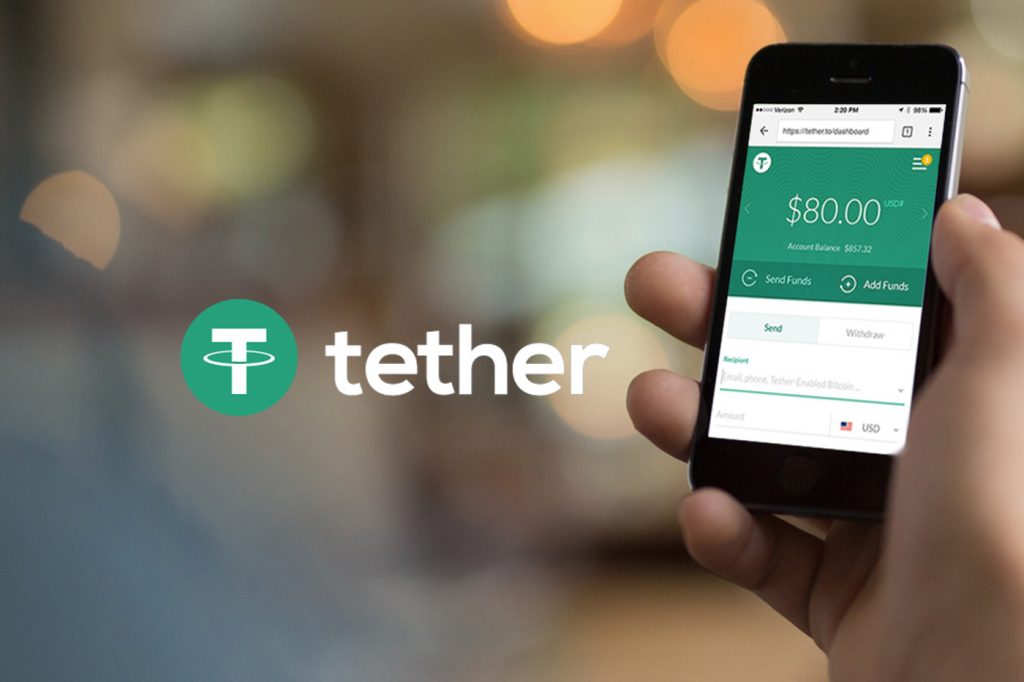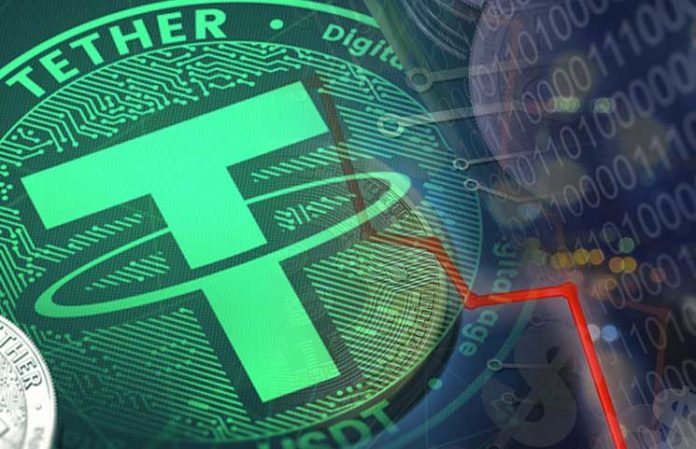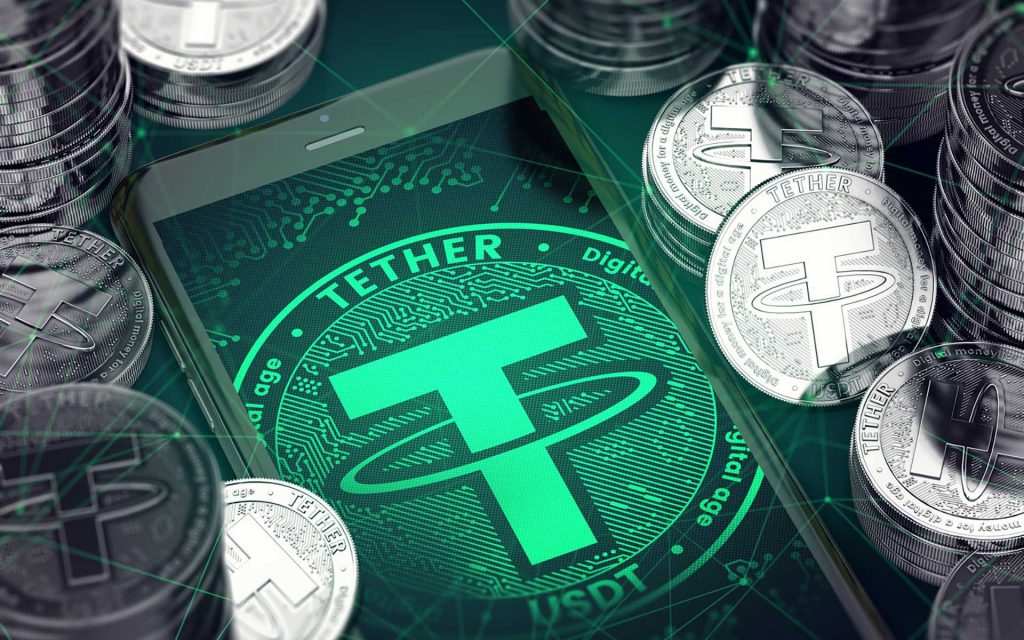What is Tether – information on USD-pegged cryptocurrency
Tether is one of the most unique cryptocurrencies that vastly differs from the well-known coins on the market. The main differentiating factor of Tether that is also crucial in answering the question ‘what is Tether and how does it work‘, is its relationship with fiat currencies. As this article tries to navigate the reader through the details on Tether, it will touch upon this issue in more depth as well as the history of its development and the need for a cryptocurrency like Tether. “We’ve combined the best of both worlds. Get the joint benefits of open blockchain technology and traditional currency,” – reads Tether’s website. In order to understand how Tether works and how it manages to combine the best of the two worlds, we’ll have to discuss some specifications of the currency and the shortcomings of other cryptocurrencies that operate in a different manner.
What problem is Tether targeting?
First step to understanding the meaning of Tether is to understand the problem that it is trying to solve. It is no secret to anyone that cryptocurrencies are a largely volatile asset. While the volatility could’ve been the reason why these digital coins became so popular in the first place, the disadvantages of quickly changing prices became evident when the cryptocurrency markets experienced a deep decline at the end of 2017. There are users who are interested in the technology behind cryptocurrencies, the efficiency they provide and the advantages they have compared to the fiat currency. Nevertheless, because of the volatility in prices, these users have to abstain from investing their money into cryptocurrencies. In order to tackle this issue stablecoins have been developed.

Stablecoins are specifically designed to minimize the volatility in price. In order to achieve the stability, developers of different assets have pegged the value of the digital coins to other assets that experience less volatility. These assets could include fiat currencies as well as exchange-traded commodities like gold, industrial metals and others. This is also how Tether works. In the case of Tether, each token is pegged to a single unit of fiat currency like the US dollar. The coin is designed in a way that its value should always be equal to $1, although this doesn’t always hold as we’ll see later. “One Tether equals one underlying unit of the currency backing it, e.g., the U.S. Dollar, and is backed 100% by actual assets in the Tether platform’s reserve account. Being anchored or “tethered” to real world currency, Tether provides protection from the volatility of cryptocurrencies,” – reads the website of the cryptocurrency.
Details on Tether history and background
In 2012, J.R. Willett published a whitepaper in which he discussed the possibility of building a second layer of cryptocurrency on top of the Bitcoin Protocol. Later, Willett got the chance to implement these ideas in a new cryptocurrency called Mastercoin. Mastercoin would later become the foundation for what Tether is today. Two of Tether’s founders, Brock Pierce and Craig Sellars worked at Mastercoin Foundation as well. Brock Pierce and Craig Sellars, along with Reeve Collins started what would become the precursor to Tether, Realcoinm, in 2014 in Santa Monica. Using the Omni Layer Protocol, they managed to issue the first tokens in October 2014. A month after that, the founders renamed the project and called it ‘Tether’, which expressed the idea behind the cryptocurrencies much better. They also announced support for three currencies, United States Dollar, Euro and Japanese yen. Each token would be redeemable for the currency it was pegged to and as the company stated, each token was backed 100% by the original fiat currency. This issue would become controversial in a couple of years, but more on that later.
A cryptocurrency doesn’t really have a chance to become adopted by the general market unless it is supported by one of the major digital asset exchanges. This was achieved by Tether at the beginning of 2015, when Bitfinex, one of the biggest cryptocurrency exchanges started to support it. The idea of having a fiat currency pegged cryptocurrency on the exchange was too good to pass on. Users would no longer have to cash out every single time they wanted to make a trade. They could simply use Tether, knowing that the value of the coin would remain fixed in terms of the corresponding fiat currencies. This way more investors found out about what Tether stands for. Nevertheless, the partnership of Bitfinex and Tether didn’t happen without any controversy either. The Paradise Papers leaks in late 2017 revealed that major Bitfinex officials were also responsible for setting up the Tether Holdings Limited. The representatives of both companies, however, had denied any such connections. After the leak, the companies announced that both firms had the same CEO, Jan Ludovicus van der Velde. In order to process transactions, Tether was using Taiwanese banks and the services of Wells Fargo. During the summer of 2017, the international transfers were blocked disallowing Tether to operate effectively. As a result, both Tether and Bitfinex filed suit against Wells Fargo but the lawsuit was withdrawn only a week later.

Although Tether was initially issued on the Bitcoin platform and the whitepaper even emphasized this fact as an advantage of Tether over other fiat-backed cryptocurrencies (“Tethers exist on the Bitcoin blockchain rather than a less developed/tested “altcoin” blockchain nor within closedsource software running on centralized, private databases”), in 2017 the team behind Tether announced that a new Omni layer of Litecoin was in works. A few months later, the company issued tokens on Ethereum blockchain. Currently, there are four types of Tether tokens, USD backed Tether on Bitcoin’s Omni layer, Euro backed Tether on Bitcoin’s Omni layer, USD backed Tether as an ERC-20 token on Ethereum platform and Euro backed Tether as an ERC-20 token on the Ethereum platform.
Controversy regarding the price manipulation of Tether
Unfortunately, it is impossible to write any definition of Tether without touching upon the controversy it faced throughout the years. As Tether became increasingly popular, the number of the tokens outstanding grew as well. From the beginning of 2017 until the second half of 2018, the value of the outstanding coins grew from $10 million to $2.8 billion. Per the team’s promise, this amount would have to be backed by 100% original fiat currency. Tether also started to account for a larger share of Bitcoin trading volume. In the summer of 2018, Tether accounted for an estimated 80% of Bitcoin volume. This means that the skyrocketing price of Bitcoin was partially fueled by Tether. This was bound to attract all types of attention. As a result, accusations started to arise that that $500 million Tethers issued in August 2018 were used to drive up the price of Bitcoin artificially. Bloomberg reporters found evidence of oddly sized orders which could have been used to signal wash trades to the automated trading programs. The representatives from Bitfinex and Tether denied the accusations. JL van der Velde commented: “Bitfinex nor Tether is, or has ever, engaged in any sort of market or price manipulation. Tether issuances cannot be used to prop up the price of bitcoin or any other coin/token on Bitfinex.”

The reports were enough for Bitfinex and Tether to receive subpoenas from the US Commodity Futures Trading Commission at the end of 2017. The bank that handled the transactions for Tether was forced to put itself up for sale as Tether had to find a new banking partner in Bahamas-based Deltec Bank. After establishing the new partnership, Tether announced that it had $1.8 billion in deposit at the bank. This launched a new wave of controversy as the bank itself declined to comment on the statement. According to the company, all tokens are backed by 100% fiat currency, which the company should have stored in deposits. Tether went so far as to claim that it would make its holdings transparent through an external audit. Nevertheless, no such audit was released. Even more than that, Tether broke the ties with its auditor. This news was bound to launch a speculative frenzy as investors started to wonder about the truthfulness of Tether’s claims to have the deposits supporting the tokens.
In June 2018, Freeh, Sporkin & Sullivan LLP (FSS) posted an audit report that seemed to be proving the existence of deposits which fully backed the issued Tether tokens. Nevertheless, FSS said that “FSS is not an accounting firm and did not perform the above review and confirmations using Generally Accepted Accounting Principles,” adding that “The above confirmation of bank and tether balances should not be construed as the results of an audit and were not conducted in accordance with Generally Accepted Auditing Standards.” This naturally aroused more questions, to which Stuart Hoegner, Tethers general counsel responded: “the bottom line is an audit cannot be obtained. The big four firms are anathema to that level of risk. We’ve gone for what we think is the next best thing.”
Price and market capitalization of Tether explained simply
Another big part of the review of Tether is the price of the cryptocurrency. With the price of a fiat currency pegged currency, there shouldn’t be a lot to discuss. Nevertheless, Tether has experienced some fluctuations. For the first few years after its introduction, the price of Tether remained fixed at $1. The market capitalization increased from about $250,000 to almost $7 million from the launch until the end of 2016. In August 2016 there was a slight bump as the price dropped below $1, but it recovered quickly. The true fluctuations started in the summer of 2017 when the controversy around the coin started to become more discussed. In April 2017 the price dropped to $0.93 before rising over $1 and then falling back down again. Since that period, the price has been fluctuating but it has always changed around the value of $1. The market capitalization, on the other hand, skyrocketed as the number of tokens outstanding increased drastically. At the beginning of 2017, the market capitalization was just over $7 million. Then as the whole cryptocurrency market experienced extremely fast-paced growth, Tether’s market cap jumped as well. Over the course of a year, it had gained a couple billion dollars in value. At its peak, the market capitalization of Tether was above $2.8 billion. As the whole cryptocurrency market started to deflate, so did Tether. Although it’s price still fluctuates around $1, the market capitalization dropped to about $1.7 as of November 2018. This is still extremely huge considering where the cryptocurrency started. It also makes Tether the 8th biggest cryptocurrency in the world, behind Litecoin and above Cardano.

In conclusion, what Tether does, is that it introduces stability in an extremely volatile environment. There was a clear demand for a cryptocurrency like Tether, as people who wanted to take advantage of the benefits offered by the new technology were not willing to risk their funds with alternative coins. Furthermore, Tether gave traders an option to convert their cryptocurrency holdings to an asset they knew would have a guaranteed price. This is why the adoption of the stablecoin was fast and the supply skyrocketed in a matter of months. As more people found out about what Tether stands for, the demand increased as well. While Tether has been surrounded with controversies that include accusations of using the currency to drive up the price of Bitcoin and blaming the management for defrauding users by not keeping the promised deposits, the cryptocurrency is still doing well and is one of the biggest digital coins in the world by market capitalization.


























Comments (0 comment(s))